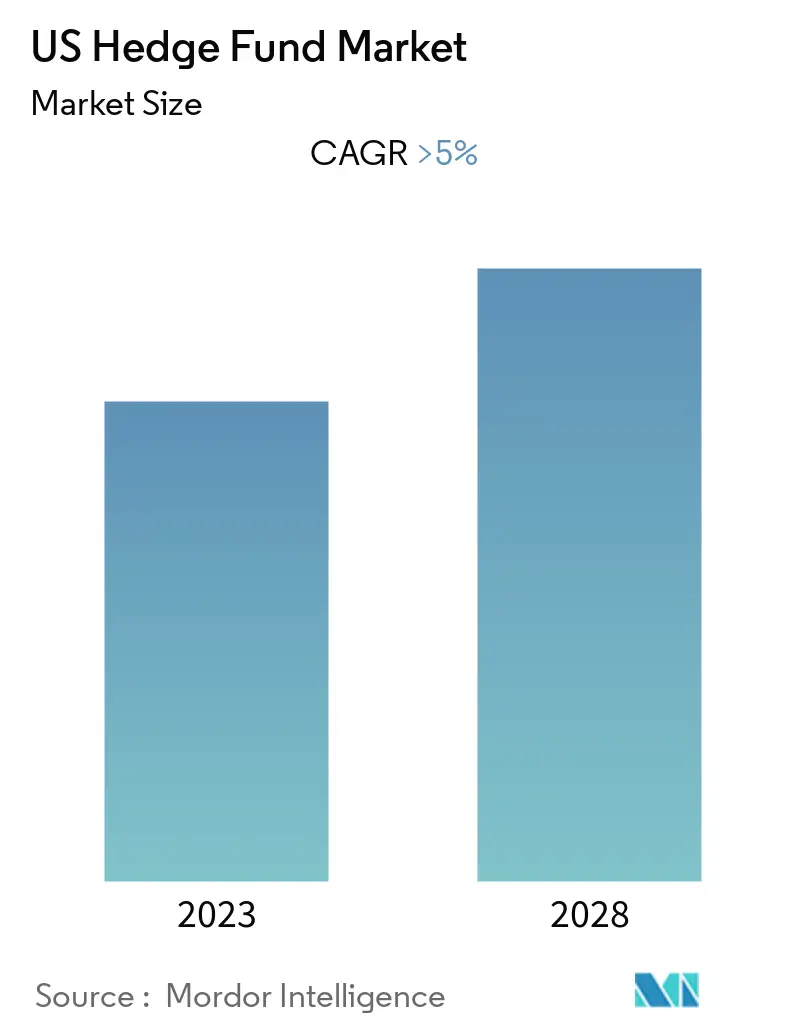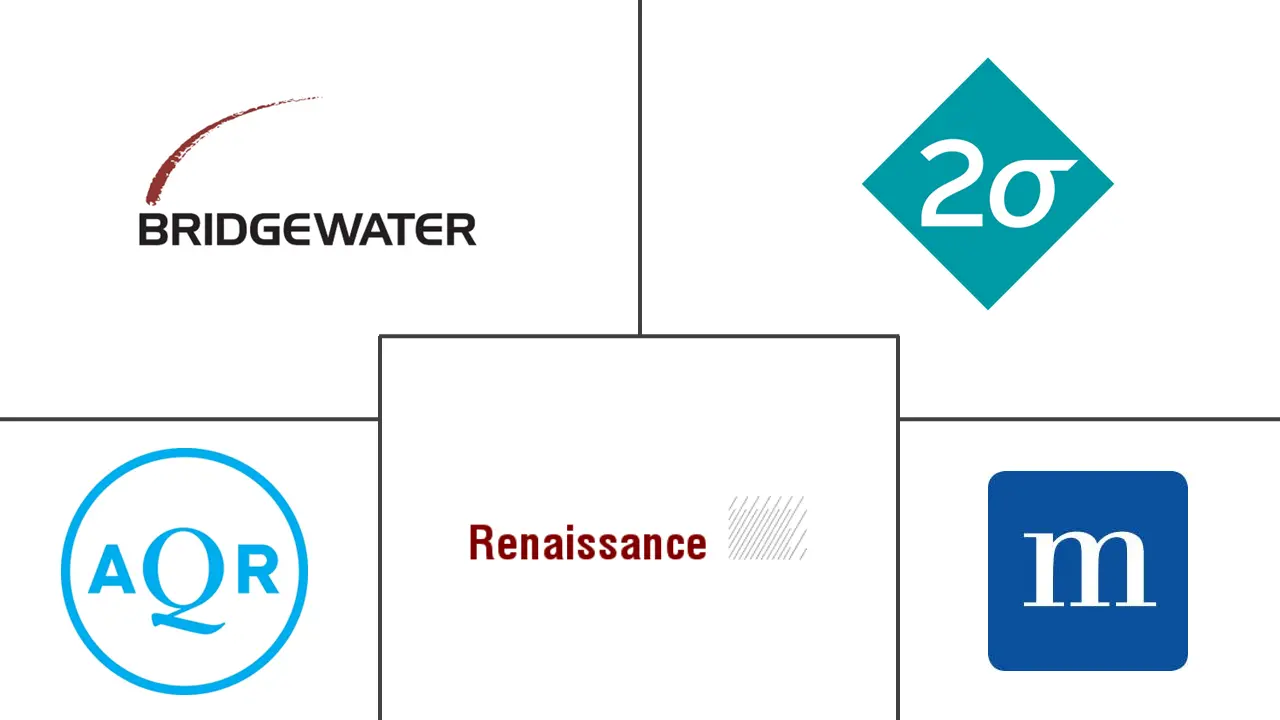Market Size of US Hedge Fund Industry

| Study Period | 2019-2028 |
| Base Year For Estimation | 2022 |
| Forecast Data Period | 2024 - 2028 |
| Historical Data Period | 2019 - 2021 |
| CAGR | > 5.00 % |
| Market Concentration | Medium |
Major Players
*Disclaimer: Major Players sorted in no particular order |
Need a report that reflects how COVID-19 has impacted this market and its growth?
US Hedge Fund Market Analysis
The US hedge fund market currently made USD 110 billion in sales and is expected to register a CAGR of 5% over the forecasted period.
A hedge fund is a collective investment fund that is invested in securities or another type of investment to get returns. Hedge funds are able to make use of complex trading, portfolio construction, and risk management techniques for improving returns. The United States accounts for three-quarters of the assets under management (AuM) across the world in this industry. The US has 3,405 of the 5,523 institutional investors who are active in hedge funds, and 3,319 of the 5,383 hedge fund managers who are active. Fund managers are also using AIML (artificial intelligence and machine learning) more and more to increase returns and improve the efficiency of their operations.
The impact of COVID-19 on the hedge fund industry increased spillover risk. The number of operating hedge funds grew as well. Today, there are 3,926 hedge fund businesses in the US as of 2023, an increase of 2.8% from 2022.
With the barriers to entry for starting a hedge fund at their highest levels due to increased regulatory requirements and sophisticated operational needs, many individuals with impressive investment track records are attracted to joining a 'plug and play' operation where they can focus on generating alpha rather than dealing with the expense and risk of failure associated with setting up their own operation. The pandemic drove this trend, as the remote working environment led allocators to put more money to work with managers they were familiar with rather than engaging new managers.
